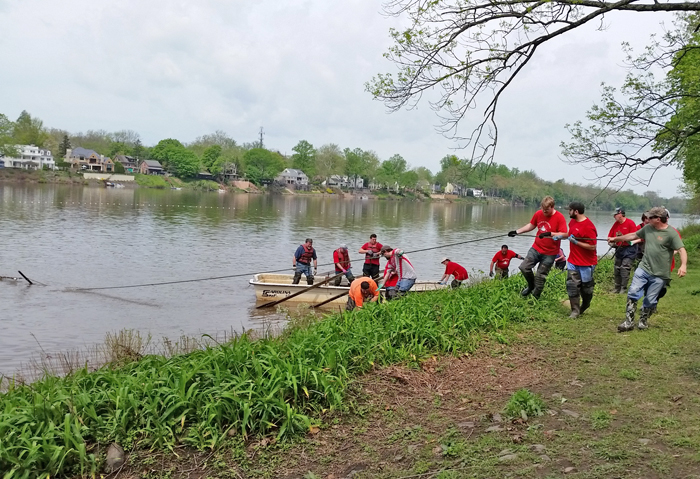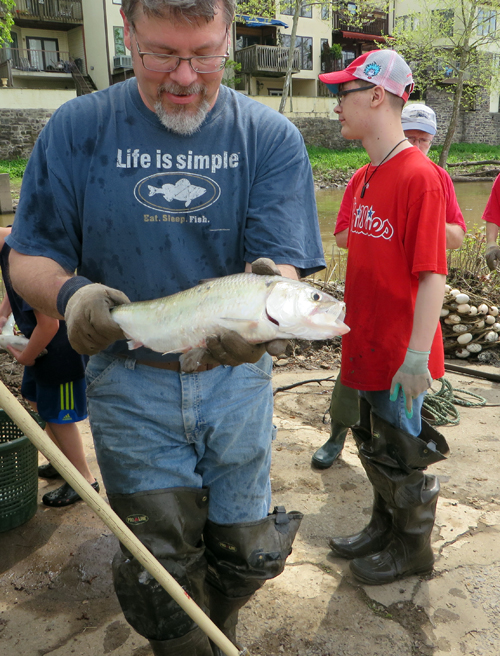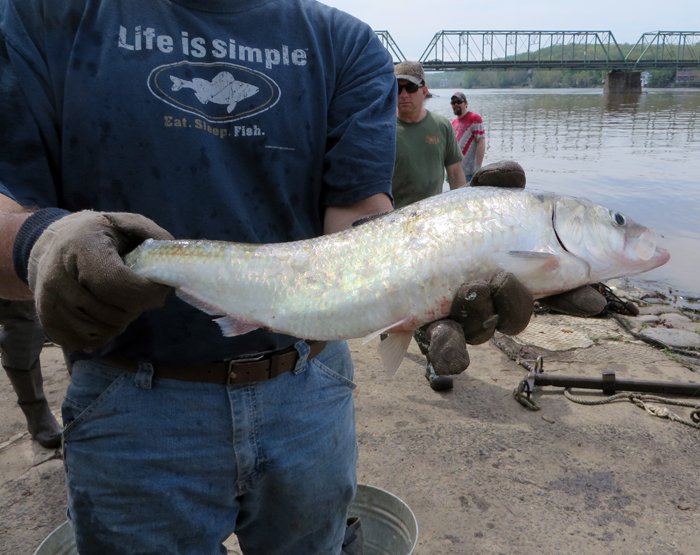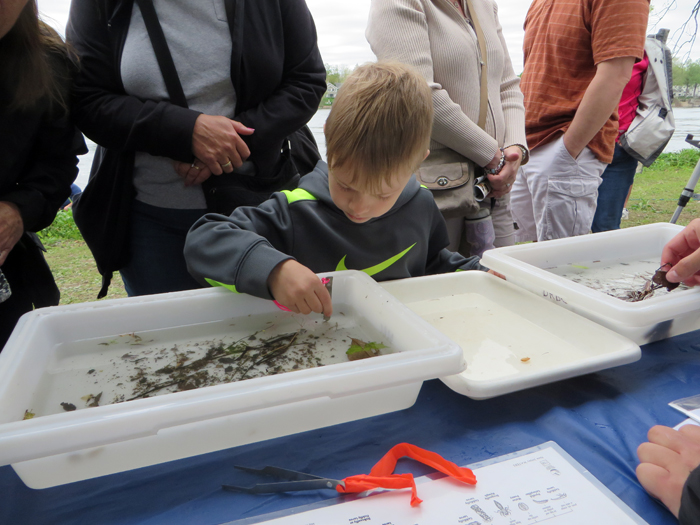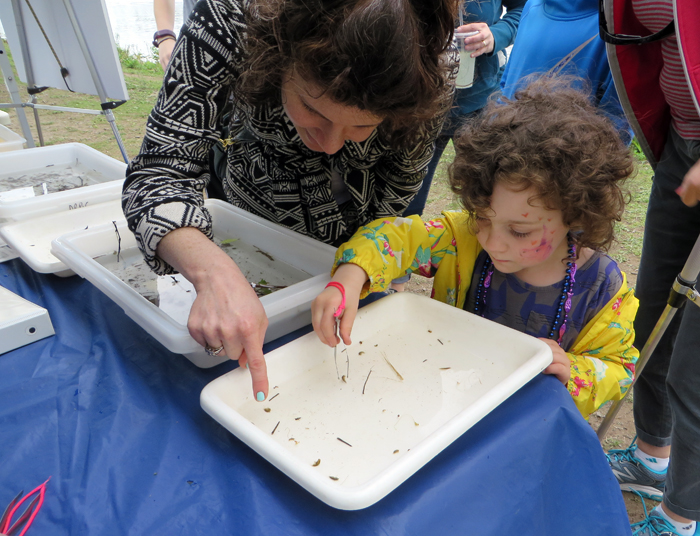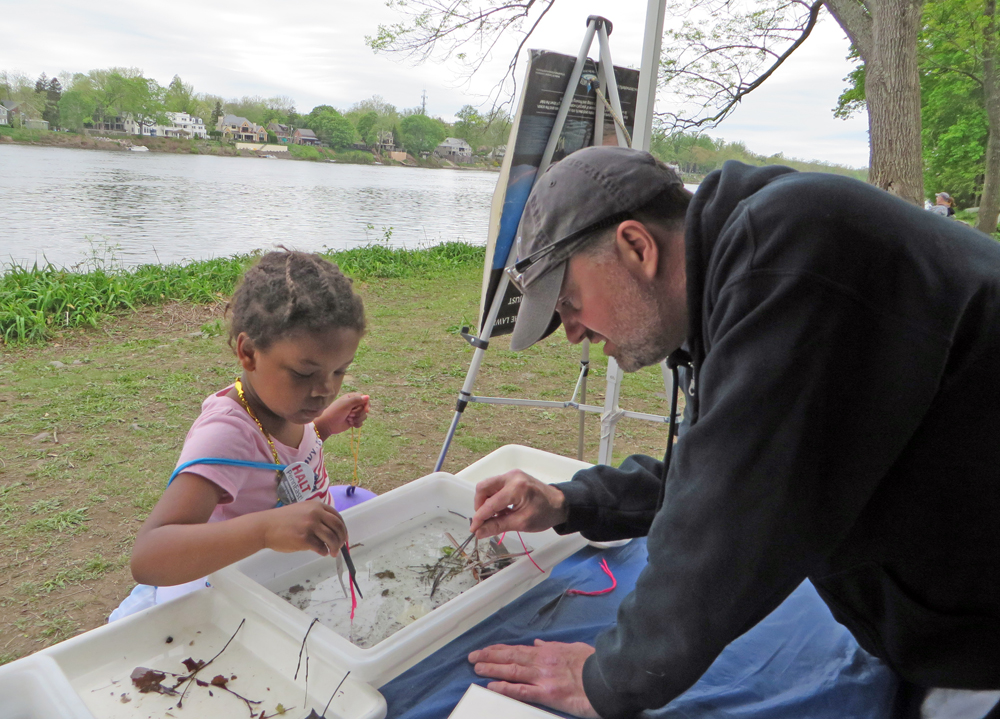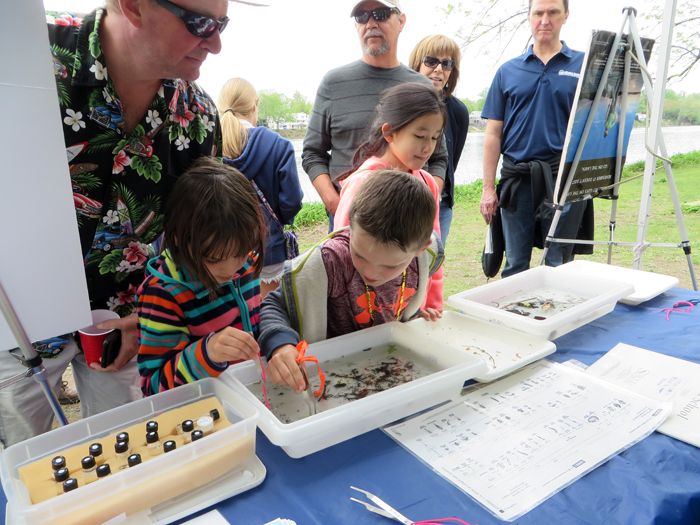Delaware • New Jersey • Pennsylvania
New York • United States of America
Why do scientists collect aquatic bugs? DRBC staff answered that question and many others at the 36th Annual Lambertville Shad Festival, held April 29-30, 2017.
DRBC's exhibit was set up on Lewis Island, where commission staff collected macroinvertebrates (aquatic bugs) from the Delaware River and displayed them in trays of water. Using identification keys and with the help of DRBC staff, kids and adults alike were able to identify the bugs found in the water samples. The hands-on lesson explained that the type and amount of macroinvertebrates (aquatic bugs) found in a waterway can help indicate its water quality. Some bugs, for example mayfly, damselfly, or caddisfly larva, are very sensitive to pollution; others, such as leeches or aquatic worms, are more pollution tolerant. Finding more pollution sensitive species in the water samples, which we did at Shad Fest, is a positive indicator of the health of the Delaware River off of Lewis Island.
In addition to teaching how bugs can indicate the river’s water quality, DRBC staff talked with festival attendees about the commission and its programs and about the Delaware River and its watershed. Lewis Island is also where the Lewis Fishery, the last commercial shad fishery on the Delaware River, offered a demonstration on how they seine (catch with nets) for American shad. They fish for shad all season long; you can view their 2017 Delaware River shad fishing reports and others compiled by N.J. by clicking here.
The Shad Festival celebrates the region's arts community, the Delaware River, and of course, the annual return of the American shad! The Delaware River is an important waterway for American shad, and their presence is indicative of the water quality improvements that have occurred over time. For decades during the 1900s, pollution robbed the lower Delaware River of the oxygen needed for shad and other fish to breathe. The number of American shad in the Delaware increased dramatically by the late 1980s and early 1990s due in large part to pollution control programs conducted by the Delaware River Basin Commission (DRBC) and other environmental agencies. Learn more about American shad.
We thank Steve Meserve and the Lewis Fishery Crew for allowing us to again display on Lewis Island with them!
Copyright © Delaware River Basin Commission,
P.O. Box 7360, West Trenton, NJ 08628-0360
Phone (609)883-9500; Fax (609)883-9522
Thanks to NJ for hosting the DRBC website


